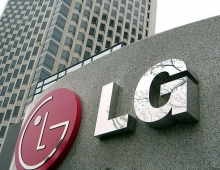
EU to Invest 18 million Euros in Ultra High-speed Mobile Internet
As of 1 January 2010, the EU will invest € 18 million into research that will underpin next generation 4G mobile networks, the European Commission decided.
The EC decided to start the process of funding research on Long Term Evolution (LTE) Advanced technology, that will offer mobile internet speeds up to a hundred times faster than current 3G networks. LTE is becoming the industry's first choice for next generation mobile networks, also thanks to EU research funding since 2004.
"With LTE technologies, Europe's research 'know-how' will continue to set the tone for the development of mobile services and devices around the globe, just as we did in the past decades with the GSM standard," said Viviane Reding, the EU's Commissioner for Telecoms and Media. "LTE technologies will turn mobile phones into powerful mobile computers. Millions of new users will get ultra high-speed internet access on their portable devices, wherever they are. This will create tremendous opportunities and plenty of space for growing the digital economy."
Long Term Evolution (LTE) is the latest wireless technology, providing mobile internet speeds of up to 100 megabits per second, ten times faster than 3G mobile networks. In Europe, it is currently being trialled by mobile operators in Finland, Germany, Norway, Spain, Sweden and the UK and is expected to be commercially available in Sweden and Norway in the first half of 2010. Between 2004 and 2007, the EU supported research on optimisation and standardisation of LTE (the WINNER I and II projects, run by a consortium of 41 leading European companies and universities) with €25 million. This led to the development of the first concept for a LTE-based network infrastructure.
Last month, the European Commission decided to start investing a further €18 million into research on the enhanced version of LTE, LTE Advanced. In September, the Commission will start to negotiate the details with project consortia, including the flagship ARTIST4G that builds on the achievements of the WINNER projects and unites 4G industry and researchers from Finland, France, Germany, Italy, Netherlands, Poland, Spain, Sweden and the UK. The new projects are expected to start in January 2010.
The European Commission sees strong potential in the deployment of LTE and LTE Advanced technology.LTE will boost the capacities of network operators, enabling them to provide faster mobile broadband to more users at lower prices.LTE Advanced will propel mobile broadband speeds up to 1 gigabit (thousand megabits) per second, allowing users on the go to fully benefit from sophisticated online services such as high quality TV or video on demand.
LTE also uses radio spectrum more efficiently, enabling mobile networks to benefit from the "digital dividend" and use the frequencies freed by the switchover from analogue to digital TV ( IP/09/1112 ). Signals will travel further than with current GSM technology and reduce the number of antenna sites needed to achieve the same network coverage, preserving Europe's landscapes and reducing energy consumption.
LTE could also bring mobile broadband to less populated regions and contribute to the reduction of the "digital divide" between rural and urban areas. In late 2008, 23% of the population in rural areas of the EU still could not subscribe to a DSL internet connection.
Leading mobile operators and manufacturers around the world such as Orange, TeliaSonera, T-Mobile, AT&T, NTT-DoCoMo, Verizon, Alcatel-Lucent, Ericsson, Huawei and Nokia Siemens Networks have already committed to using the LTE standard. By 2013, operators worldwide are expected to invest nearly ? 6 billion ($8.6 billion) in LTE equipment, according to market analysts.
Overall, in 2007-2013 the EU will invest more than €700 million into research on future networks, half of which will be allocated to wireless technologies contributing to development of 4G and beyond 4G networks.
"With LTE technologies, Europe's research 'know-how' will continue to set the tone for the development of mobile services and devices around the globe, just as we did in the past decades with the GSM standard," said Viviane Reding, the EU's Commissioner for Telecoms and Media. "LTE technologies will turn mobile phones into powerful mobile computers. Millions of new users will get ultra high-speed internet access on their portable devices, wherever they are. This will create tremendous opportunities and plenty of space for growing the digital economy."
Long Term Evolution (LTE) is the latest wireless technology, providing mobile internet speeds of up to 100 megabits per second, ten times faster than 3G mobile networks. In Europe, it is currently being trialled by mobile operators in Finland, Germany, Norway, Spain, Sweden and the UK and is expected to be commercially available in Sweden and Norway in the first half of 2010. Between 2004 and 2007, the EU supported research on optimisation and standardisation of LTE (the WINNER I and II projects, run by a consortium of 41 leading European companies and universities) with €25 million. This led to the development of the first concept for a LTE-based network infrastructure.
Last month, the European Commission decided to start investing a further €18 million into research on the enhanced version of LTE, LTE Advanced. In September, the Commission will start to negotiate the details with project consortia, including the flagship ARTIST4G that builds on the achievements of the WINNER projects and unites 4G industry and researchers from Finland, France, Germany, Italy, Netherlands, Poland, Spain, Sweden and the UK. The new projects are expected to start in January 2010.
The European Commission sees strong potential in the deployment of LTE and LTE Advanced technology.LTE will boost the capacities of network operators, enabling them to provide faster mobile broadband to more users at lower prices.LTE Advanced will propel mobile broadband speeds up to 1 gigabit (thousand megabits) per second, allowing users on the go to fully benefit from sophisticated online services such as high quality TV or video on demand.
LTE also uses radio spectrum more efficiently, enabling mobile networks to benefit from the "digital dividend" and use the frequencies freed by the switchover from analogue to digital TV ( IP/09/1112 ). Signals will travel further than with current GSM technology and reduce the number of antenna sites needed to achieve the same network coverage, preserving Europe's landscapes and reducing energy consumption.
LTE could also bring mobile broadband to less populated regions and contribute to the reduction of the "digital divide" between rural and urban areas. In late 2008, 23% of the population in rural areas of the EU still could not subscribe to a DSL internet connection.
Leading mobile operators and manufacturers around the world such as Orange, TeliaSonera, T-Mobile, AT&T, NTT-DoCoMo, Verizon, Alcatel-Lucent, Ericsson, Huawei and Nokia Siemens Networks have already committed to using the LTE standard. By 2013, operators worldwide are expected to invest nearly ? 6 billion ($8.6 billion) in LTE equipment, according to market analysts.
Overall, in 2007-2013 the EU will invest more than €700 million into research on future networks, half of which will be allocated to wireless technologies contributing to development of 4G and beyond 4G networks.





















